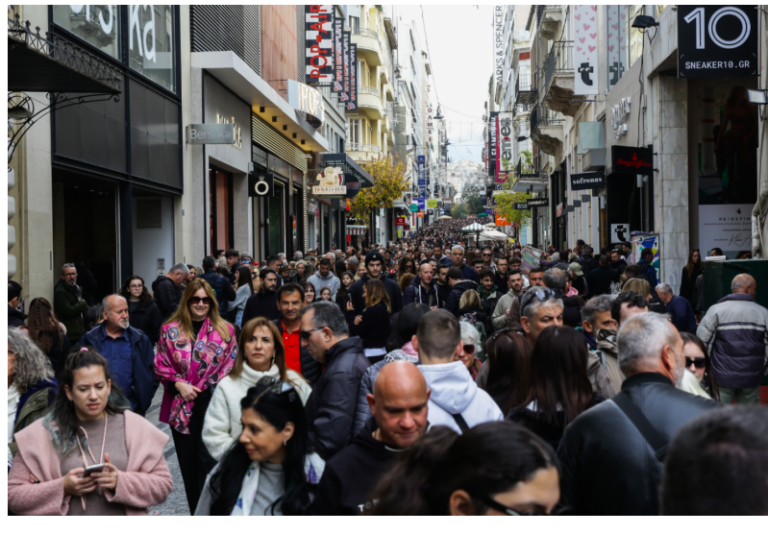Villa Apollon in Lefkada is a case study that reveals the potential real estate currently holds in Greece, where despite the admittedly very expensive sales prices that are circulating, it still remains significantly lower than the corresponding ones in Italy and Spain.
This villa was sold at the price of 4.1 million euros, which although might not be the most expensive villa that has been sold in Greece in terms of absolute cost, is considered the most expensive in relation to the price of square meters. It has…just 285 m2 of interior space and 1414 m2 of exterior space.
The story of villa Apollon begins 10 years ago when Constantis Rokofyllos (palerosdreamhomes.com) created in the then unknown Paleros of Etoloakarnania, a real estate development company putting the area on the map of real-estate and travel destinations – in a similar way that this it was done on a different scale in Antiparos by the Oliaros company.
Today, both in Palairos and in the nearby destinations, such as Lefkada, houses of unique design have been created that look out over the calmer, compared to the Aegean, Ionian landscape. Villa Apollon seems to be the beginning that further upgrades the coastal land of the western regions, as can be seen from what has been planned for the next period.
Palerosdreamhomes undertook the study of the concept and the construction of the villa, while the architectural office Block722 of Sotiris Tserga and Katia Margaritoglou was inspired by the design and decoration of the house (materials mainly from woodandstone.gr).
Block 722 currently enjoys international acclaim, evidenced both by publications in foreign media and by the projects they undertake to which they give their own special identity.
Villa Apollon is located in the Vasiliki area of Lefkada, on the side of a rock, and is surrounded by local, green vegetation and a view of the Ionian Sea. It has a total of 7 bedrooms. A main house with three bedrooms, 4 independent guest houses, two swimming pools (one 18.9 x 5.15 and one 3.65 x 5.00), etc.
Completed in early 2021, the project effortlessly blends modern architecture with nature, making the most of its surroundings while respecting it.
For example, planted roof and underground building techniques were used to restore the landscape to its original form, with minimal intervention, creating replanted areas with local herbs and plants. The entrance to the house begins at the highest point with paved terraces leading visitors down to the main house.
Natural materials, both in the main house and in the guesthouses, complement the concrete plaster construction and refer to the wild Mediterranean vegetation around the area.
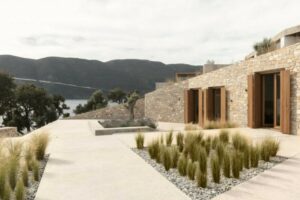
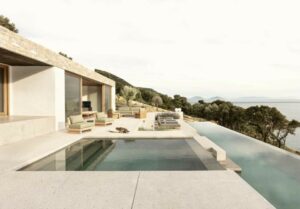

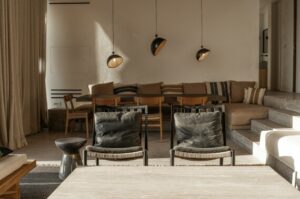

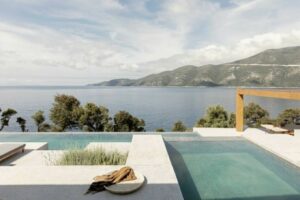
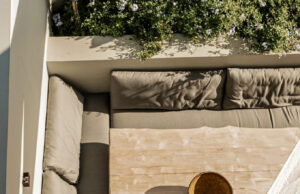
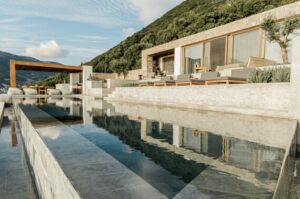
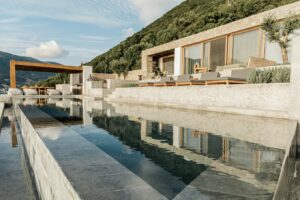
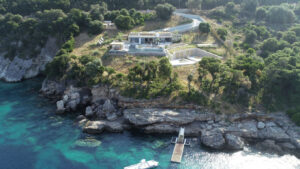
Ask me anything
Explore related questions

